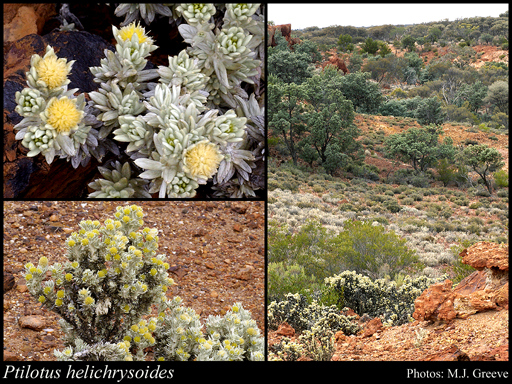- Reference
- Fragm. 6:231 (1868)
- Conservation Code
- Not threatened
- Naturalised Status
- Native to Western Australia
- Name Status
- Current
Erect, compact shrub, 0.1-0.5 m high. Fl. green-cream-yellow, Jul to Nov. Rocky hillslopes, outcrops.

Scientific Description
Shrubs, stems single, more or less erect, persistently hairy or glabrescent, with nodose hairs. Leaves present, 5-26 mm long, 2-8 mm wide, persistently hairy, with nodose hairs; basal rosette absent; cauline leaves alternate. Spikes yellow, ovoid, hemispherical or spherical, solitary, with densely arranged flowers. Bracts 3.2-3.7 mm long, colourless, hairy, not awned or mucronate, with an obscure midrib. Bracteoles 4.2-4.5 mm long, colourless, hairy, not awned or mucronate, with an obscure midrib. Outer tepals 6-7.7 mm long, entire. Inner tepals 5.5-7.3 mm long, glabrous within. Style 4.1-4.7 mm long, straight, centrally fixed to ovary. Distribution: South West and Eremaean Botanical Region; IBRA regions: Coolgardie, Great Victoria Desert, Murchison.
Distribution
- IBRA Regions
- Avon Wheatbelt, Coolgardie, Geraldton Sandplains, Great Victoria Desert, Murchison.
- IBRA Subregions
- Eastern Goldfield, Eastern Murchison, Geraldton Hills, Merredin, Shield, Southern Cross, Western Murchison.
- Local Government Areas (LGAs)
- Coolgardie, Dundas, Greater Geraldton, Kalgoorlie-Boulder, Laverton, Leonora, Menzies, Northampton, Sandstone, Yalgoo, Yilgarn.